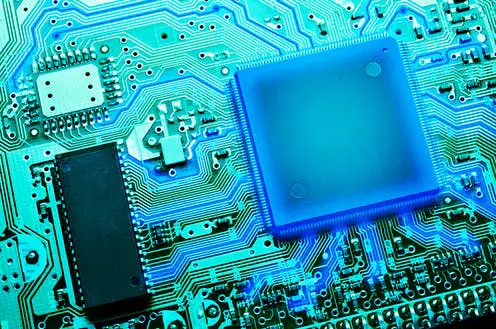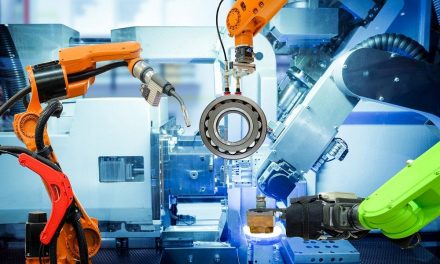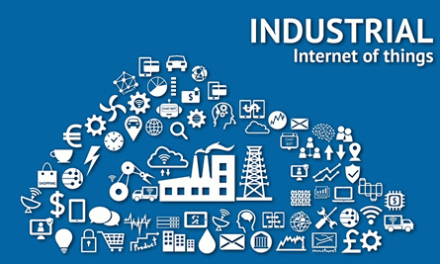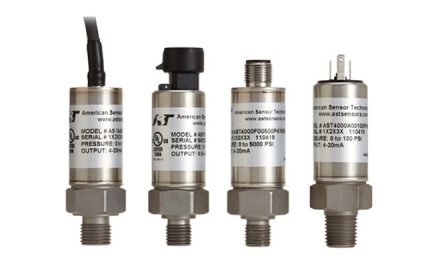The world has experienced a technological revolution. This has resulted in processes and activities that used a manual means now moving over to use semiconductor technology. In this technology, the devices operate using fundamental principles – each device has an input (or set of inputs), a processing unit, and an output (or set of outputs). This article is going to explain on the processing unit, namely, the microprocessor, and the different types of microprocessors.
Table of Contents
A little history
The word microprocessor is an amalgamation of the terms “micro” and “processor.” In the past, around 1960, the processors used were constructed using discrete elements. The device were bulky and slow. The introduction of the microchip in 1970 was a huge leap in technology as the components that made up the processor could now be put on a single piece of silicon. The size was much smaller and the speed was much faster. This gave the birth to the “microprocessor.”
The Microprocessor
The formal definition of a microprocessor is as follows:
“The microprocessor is a programmable multipurpose silicon chip, register based, clock driven, which accepts input as a binary data and after the processing, provides the output data as per the instructions stored in the memory.”
Types of microprocessors
There are several ways of classifying a microprocessor. You can get the types of microprocessors by grouping them by the following:
- Instruction set based classification
- Bus and memory classification
- Application Based Classification
Let us have a look of the various ways of classifying microprocessors:
Instruction set based classification
Reduced Instruction Set Computer (RISC) and Complex Instruction Set Computer (CISC). Those are the two instruction sets that work in two different ways and, thus, you can get the below types of microprocessors accordingly.
RISC
A RISC microprocessor was made to reduce the execution time by simplifying the instruction set of the computer. The instruction set refers to the complete set of instructions in machine code that a central processing unit can recognize and execute. The RISC microprocessor features a limited number of instructions. This therefore allows the device to operate at a very high speed. In addition, these chips require fewer transistors, and this makes their fabrication process cheaper than that of producing a CISC. Each instruction is of the same length, which allows the instruction to be fetched in a single operation. The majority of the instructions complete in one machine cycle, thus, enabling the processor to handle very many instructions at one time. This process is referred to as pipelining. This type of microprocessor uses hard wired logic.
Note: A machine cycle is defined as the basic operation executed by a CPU. It is made up of a sequence of three steps that are performed over and over again, and these are fetch, decode and execute.
Examples: PowerPC processors 601, 604; PA-RISC: HP 7100LC; SUN SPARC and SUN ULTRA SPARC, ARM processors
CISC
A CISC microprocessor is one that supplies a number of complex instructions at the assembly level. There are different execution times for instructions. There is a large number of complex addressing nodes, unlike a RISC which has fewer addressing nodes. It uses control logic. A CISC microprocessor using comparable semiconductor technology to a RISC can perform ½ to ¼ of the performance of a RISC. The design cycle is longer – RISC processors can be designed more quickly due to their simplicity unlike CISC designs. This results in a greater gap in performance between generations of RISC and CISC processors.
Examples of this type of microprocessor are: Pentium Pro, Pentium 4, Motorola 68000, IBM 370
Bus and memory classification
Under this type of classification, there are two architectures.
Von Neumann architecture
The Von Neumann architecture is another type of microprocessor. This is a theoretical design which is based on the idea of stored-program computers in which the data and instructions are stored in the same memory.
This architecture is made up of three distinct components.
Central Processing Unit – CPU
This is subdivided into the Arithmetic Logic Unit, the Control Unit, and registers.
Memory Unit
This consists of the Random Access Memory, and it is the memory which is mainly used to store instructions and program data.
Input/output interfaces
These allow the users to communicate with the outside world, for example, storage devices.
This architecture is usually used in microprocessors.
Harvard Architecture
This is an architecture in which there is a physically separate storage and signal pathway for program data and instructions. It also differs from the Von Neumann architecture in that the Von Neumann architecture uses a single bus to fetch instructions from memory and transfer data from one computer to another, whereas, the Harvard architecture has a separate memory space for data and instruction.
Real world computer designs are based on the modified Harvard architecture. These are commonly used in microcontrollers and Digital Signal Processing.
Examples of devices which employ this architecture: Texas Instruments TMS320 family, the Analog Devices ADSP2100 family and the Lucent Technologies DSP16xx family
Application Based Classification
We can group different types of microprocessors using application based classification. Under this are General Purpose Processors (GPP) and Application Specific Processors (ASP).
General Purpose Processors
These are processors that are not designed with a specific purpose. This means that code can be uploaded into the processor and it will accomplish the task. These type of microprocessors are made to be fairly good at nearly any task. These are much cheaper than application specific processors, and their processing power is much less than that of ASPs. Under General Purpose Processors are GPP proper and Microcontrollers.
Application Specific Processors
These are processes that are designed with a specific purpose. This means the processors are made to be extremely good at the task they were made for i.e. their processing power is quite powerful. As a result, these processors are much more expensive than the General purpose Processors.
Under Application Specific Processors are the following:
Application Specific Integrated Circuit (ASICS)
This means that the algorithm is completely implemented in Hardware
Application Specific Instruction Set Processors (ASIPS)
These are those in which there is a programmable microprocessor where hardware and instruction set are designed together for one specific application. This eliminates redundancy
Digital Signal Processor (DSPs)
These are used for extensive numerical real time computations
A microcontroller in implementable in industrial applications
A GPP proper is useful in general purpose applications
Summary
This article gave an explanation of what a microprocessor is. The relevant types of microprocessors were clearly elaborated. I hope you found this article worth your time.





